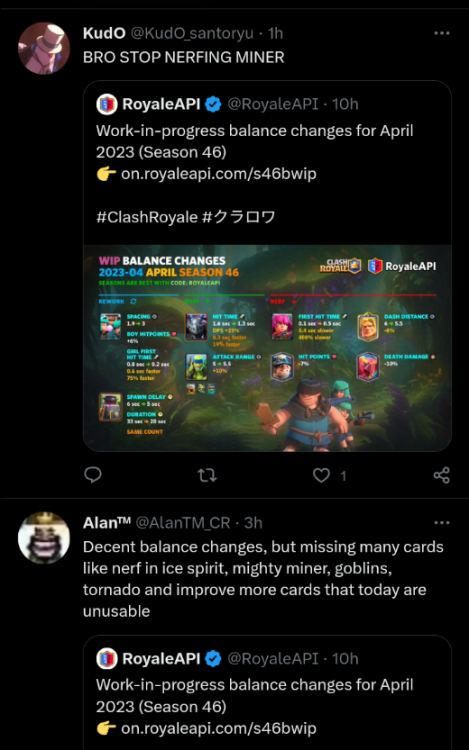-
Posts
25.684 -
Joined
-
Days Won
300
Everything posted by Lion.Kanzen
-
that is true, the Scythians are Indo-Iranians. They are related to the Persians and Parthians.
-
.thumb.png.ce58cea22940c255f5b0a735d5abee36.png)
[Community mod] Melee rebalance
Lion.Kanzen replied to real_tabasco_sauce's topic in Gameplay Discussion
I can try it at night. -6 GTM/UTC -
.thumb.png.ce58cea22940c255f5b0a735d5abee36.png)
[Community mod] Melee rebalance
Lion.Kanzen replied to real_tabasco_sauce's topic in Gameplay Discussion
now ranged infantry suffers from melee cavalry. you definitely can't leave your army with 2 types of infantry; melee and ranged, with these changes your army needs at least cavalry, missile/cavalry infantry and melee infantry. Now the balance pyramid can be perfectly fulfilled. -
@Stan` @wowgetoffyourcellphone
-
.thumb.png.ce58cea22940c255f5b0a735d5abee36.png)
[Community mod] Melee rebalance
Lion.Kanzen replied to real_tabasco_sauce's topic in Gameplay Discussion
Macedonians vs Ptolemies. I don't know if you tweaked the spear cavalry. I feel good fighting against archers, although it was not a direct combat. The few are fine because they are vulnerable to archers. The skirmishers feel flimsy, that's okay, I used them in urban combat at my base. -
.thumb.png.ce58cea22940c255f5b0a735d5abee36.png)
[Community mod] Melee rebalance
Lion.Kanzen replied to real_tabasco_sauce's topic in Gameplay Discussion
It definitely feels like a real army. A spam of 48 hoplites + 12 skirmishers cavalry accompanying the combat, it would be nice to increase the attack of the towers a bit, if I am somewhat satisfied but I did not manage to fight on equal terms, but if it feels better the Buff. In formation they should go slower. With a combination of 8 healers is deadly, I should try with Persian army or Maurya. -
first we should redefine phase 1 and differentiate it better from phase 2, phase 2 should have citizen soldiers only in battle and send siege machines to phase 3 and the champions and fortresses and siege rams in phase 4 there should be the wonder, special buildings, heroes, advanced siege machines.
-
primero habría que definir modos convencionales como captura la maravilla o captura los sitios sagrados. ----- conventional modes such as capture the wonder or capture the sacred sites should be defined first.
-
I prefer to make a rearguard with a temple and defenses. But it's not a bad idea, the only thing that might be difficult is taking care of those units, I always lose sight of them. This is good one.
-
.thumb.png.ce58cea22940c255f5b0a735d5abee36.png)
Increasing social media markting effort for 0ad visibility
Lion.Kanzen replied to Darkcity's topic in General Discussion
-
.thumb.png.ce58cea22940c255f5b0a735d5abee36.png)
Increasing social media markting effort for 0ad visibility
Lion.Kanzen replied to Darkcity's topic in General Discussion
-
.thumb.png.ce58cea22940c255f5b0a735d5abee36.png)
[Community mod] Melee rebalance
Lion.Kanzen replied to real_tabasco_sauce's topic in Gameplay Discussion
it would be better to call it update instead of release.I would confuse it with the release of A27. For now it is downloading that file. And what version is that file compatible with? -
.thumb.png.ce58cea22940c255f5b0a735d5abee36.png)
[Community mod] Melee rebalance
Lion.Kanzen replied to real_tabasco_sauce's topic in Gameplay Discussion
Are some of the changes already in the community mod? -
It would be nice to have several ways to heal the unit. Several shortcuts and mechanical functions that are specific to the healer. For example, what would be the Attack move should be used to heal something like "heal move". That for example a shortcut preferably for cavalry, another shortcut for infantry, another shortcut for certain units and so on.
-
.thumb.png.ce58cea22940c255f5b0a735d5abee36.png)
[Community mod] Melee rebalance
Lion.Kanzen replied to real_tabasco_sauce's topic in Gameplay Discussion
It's already in the mod. I have SVN a27 and I have A26 on my computer. -
.thumb.png.ce58cea22940c255f5b0a735d5abee36.png)
[Community mod] Melee rebalance
Lion.Kanzen replied to real_tabasco_sauce's topic in Gameplay Discussion
When can these changes be tested? -
.thumb.png.ce58cea22940c255f5b0a735d5abee36.png)
[Community mod] Melee rebalance
Lion.Kanzen replied to real_tabasco_sauce's topic in Gameplay Discussion
I agree with this. This endless fight is just proving it and I'll even upload gameplay if I find playing online with someone (with someone of my level). The ideal would be to just focus on simulating the fighting.Prepared attacks between large armies and different compositions. Without focusing on attacking cities. -
It looks like a pensioner (an old man) playing with the mods available for download.
-
What wonderful screenshots Tito Vicent does.
-
.thumb.png.ce58cea22940c255f5b0a735d5abee36.png)
Ratings Disputes and Offence Reporting (Discussion)
Lion.Kanzen replied to gator303's topic in General Discussion
@user1 -
.thumb.png.ce58cea22940c255f5b0a735d5abee36.png)
[Community mod] Melee rebalance
Lion.Kanzen replied to real_tabasco_sauce's topic in Gameplay Discussion
I forgot to mention roles and anti units. Example Anti infantry missile (slingers). Anti cavalry cavalry (Lancer). units such as chariots or Elephants with archers that should be units, with high armour or health, but difficult to master. -
.thumb.png.ce58cea22940c255f5b0a735d5abee36.png)
[Community mod] Melee rebalance
Lion.Kanzen replied to real_tabasco_sauce's topic in Gameplay Discussion
a way has to be found for the cavalry to fulfil its role in stamping out these little pests. In theory, ranged units are deadly little pests that annoy the melee warriors on a battlefield. The cavalry, on the other hand, is the middle class unit (depending on the faction) that can give you a hard time with its tactical manoeuvres. And the melee infantry is ultimately the ultimate hero. therefore missiles are just a distraction, few civilisations have mastered the bow or the sling, without even mentioning machines like the bolt shooter. the cavalry of this era is still primitive and serves only to flee faster and wear expensive armour, not to mention for example that they only had one hit, charging constantly and accompanying the infantry. It was not until the invention of the Cataphract that things would change or the tactics of nomadic peoples, with thousands of horses, that would force even the Romans to change their weapons. You have to take into account that arrows or horses in real life are not infinite. if you think about it, missiles and their role should not be very op, in terms of gameplay, since they don't have a counter system (except spear/spike vs. cavalry). then we will have the problem of missile vs cavalry and maybe in the long run missile vs spear/spike.




